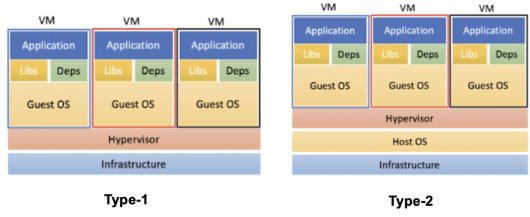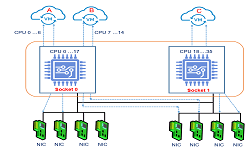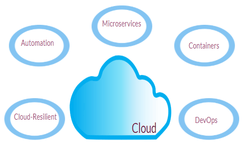What is Hypervisor in Cloud?
A hypervisor is computer software, firmware or hardware that creates and runs virtual machines (VM). A computer on which a hypervisor runs one or more virtual machines is called a host machine, and each virtual machine itself is called a guest machine.
The hypervisor treats resources—like CPU, memory, and storage—as a pool that can be easily reallocated between existing guests or to new virtual machines.
Why use a Hypervisor?
Hypervisors make it possible to use more of a system’s available resources and provide greater IT mobility since the guest VMs are independent of the host hardware. This means they can be easily moved between different servers, Hypervisor is also referred to as a virtualization layer. Multiple virtual machines can run off of one physical server with a hypervisor, a hypervisor becomes the basic requirement in the cloud world.
Hypervisor Types:
There are two types of hypervisors:
- Type-1, native or bare-metal hypervisors
- Type-2 or hosted hypervisors

Type-1, Native or Bare-Metal Hypervisors
These hypervisors run directly on the host’s hardware to control the hardware and to manage guest operating systems. For this reason, they are sometimes called bare metal hypervisors.
This type of hypervisor is most common in an enterprise data center or other server-based environments.
KVM, Microsoft Hyper-V, and VMware vSphere are examples of a type 1 hypervisor.
Type-2 or Hosted Hypervisors
These hypervisors run on a conventional operating system (OS) just as other computer programs do. A guest operating system runs as a process on the host. Type-2 hypervisors abstract guest operating systems from the host operating system.
A type 2 hypervisor is better for individual users who want to run multiple operating systems on a personal computer.
VMware Workstation and Oracle VirtualBox are examples of a type 2 hypervisor.
How does a Hypervisor work?
Hypervisors support the creation and management of virtual machines (VMs) by abstracting a computer’s software from its hardware. Hypervisors make virtualization possible by translating requests between the physical and virtual resources. Bare-metal hypervisors are sometimes embedded into the firmware at the same level as the motherboard basic input/output system (BIOS) to enable the operating system on a computer to access and use virtualization software.
Related Post :
- What is Cloud Computing
- What is Cloud Native
- NUMA (non-uniform memory access)?
- Prometheus
- Virtual machine vs Container



